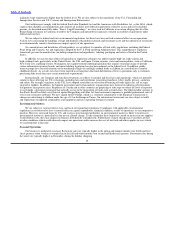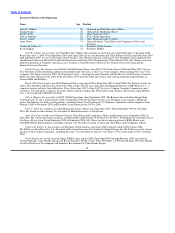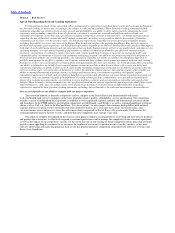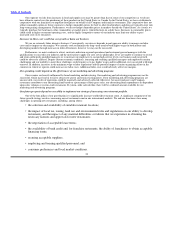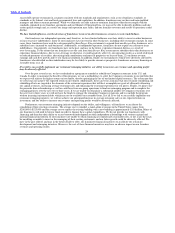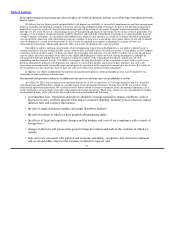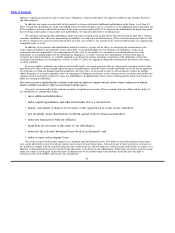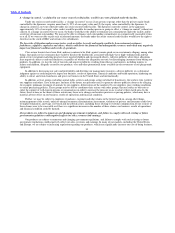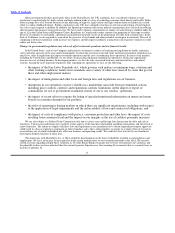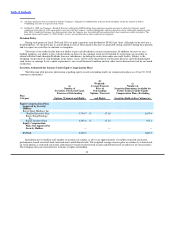Burger King 2010 Annual Report Download - page 28
Download and view the complete annual report
Please find page 28 of the 2010 Burger King annual report below. You can navigate through the pages in the report by either clicking on the pages listed below, or by using the keyword search tool below to find specific information within the annual report.
Table of Contents
• the risks of operating in developing or emerging markets in which there are significant uncertainties
regarding the interpretation, application and enforceability of laws and regulations and the enforceability
of contract rights and intellectual property rights.
These factors may increase in importance as we expect to open new Company and franchise restaurants in international markets as
part of our growth strategy.
Our business is affected by changes in consumer preferences and perceptions.
The restaurant industry is affected by consumer preferences and perceptions. If prevailing health or dietary preferences and
perceptions cause consumers to avoid our products in favor of alternative food options, our business could suffer. In addition, negative
publicity about our products could materially harm our business, results of operations and financial condition. In recent years, numerous
companies in the fast food industry have introduced products positioned to capitalize on the growing consumer preference for food
products that are, or are perceived to be, healthful, nutritious, and low in calories, sodium and fat content. Our success will depend in
part on our ability to anticipate and respond to changing consumer preferences, tastes and eating and purchasing habits.
Food safety and food−borne illnesses concerns may have an adverse affect on our business.
Food safety is a top priority, and we dedicate substantial resources to ensure that our customers enjoy safe, quality food products.
However, food−borne illnesses, such as E. coli, hepatitis A, trichinosis or salmonella, and food safety issues have occurred in the food
industry in the past, and could occur in the future. Furthermore, our reliance on third−party food suppliers and distributors increases the
risk that food−borne illness incidents could be caused by factors outside of our control and that multiple locations would be affected
rather than a single restaurant. Any report or publicity linking us or one of our franchisees to instances of food−borne illness or other
food safety issues, including food tampering or contamination, could adversely affect our brands and reputation as well as our revenues
and profits. If our customers become ill from food−borne illnesses, we could also be forced to temporarily close some restaurants. In
addition, instances of food−borne illness, food tampering or food contamination occurring solely at restaurants of competitors could
adversely affect our sales as a result of negative publicity about the foodservice industry generally.
The occurrence of food−borne illnesses or food safety issues could also adversely affect the price and availability of affected
ingredients, which could result in disruptions in our supply chain, significantly increase our costs and/or lower margins for us and our
franchisees.
Our results can be adversely affected by unforeseen events, such as adverse weather conditions, natural disasters or catastrophic
events.
Unforeseen events, such as adverse weather conditions, natural disasters or catastrophic events, can adversely impact our
restaurant sales. Natural disasters such as earthquakes, hurricanes, and severe adverse weather conditions and health pandemics, such as
the outbreak of the H1N1 flu, whether occurring in the United States or abroad, can keep customers in the affected area from dining out
and result in lost opportunities for our restaurants. For example, worldwide comparable sales in January and February 2010 were
severely impacted by inclement weather conditions in the Northeast U.S. and Europe, while the outbreak of the H1N1 flu pandemic in
Mexico during fiscal 2009 resulted in the temporary closure of many of our restaurants in and around Mexico City and adversely
affected our revenues and financial results. Because a significant portion of our restaurant operating costs is fixed or semi−fixed in
nature, the loss of sales during these periods hurts our operating margins and can result in restaurant operating losses.
Shortages or interruptions in the availability and delivery of food, beverages and other supplies may increase costs or reduce
revenues.
We and our franchisees are dependent upon third parties to make frequent deliveries of perishable food products that meet our
specifications. Shortages or interruptions in the supply of food items and other supplies to our restaurants could adversely affect the
availability, quality and cost of items we buy and the operations of our restaurants. Such shortages or disruptions could be caused by
inclement weather, natural disasters such as floods,
26


